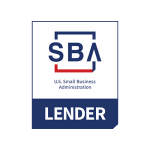What are the first steps to starting a business?
If you’re opening a business––congratulations! You’re on your way to becoming a business owner and investing in a journey of entrepreneurship. Starting a business can be difficult, and not to mention, stressful! It can feel like there are endless to-do lists to complete all at the same time––on top of your other demanding job! Of course, the busyness of opening a business is inevitable––it’s a lot of work! Still, with a little planning, it’s possible to manage expectations and move your business goals forward with purpose. Here are the first steps to starting a business.
Research, Research, Research
Before even thinking about putting down money for your new business venture, you need to conduct market research. Market research will tell you if there’s a place for your business idea to fit in the market. In addition, market research can help you identify potential customers and businesses already operating in your area. Use this information to form a solid business plan.
Make a Plan
Of course, your business venture wouldn’t be complete without a solid plan. After all, your business plan is essentially the foundation of your business. Use it as a compass to structure, run, and grow your business.
Get Funds
Your business plan is a great start to help you understand the logistics of your new entrepreneurial idea. If you don’t have the funds needed to start prepping, there are many ways to either raise or borrow the money you need.
Spot a Business Location
The location you choose for your business is a big deal. Whether you’re setting up a mom-and-pop shop or launching an online store, the location you choose can affect your taxes, legal requirements, and revenue.
Choose a Building Structure
Now that you have a solid foundation for your business plan, it’s time to choose your building structure. The legal structure that you choose for your business can impact your business in many ways. Your business structure affects how much you pay in taxes, your ability to raise money, and your personal liability. Make sure to choose your business structure wisely, as it may be harder to convert to a different structure in the future.
Name Your Business
Of course, naming your business isn’t as easy as naming Fido––a lot can go into the business-naming process. You’ll want to make sure that your business name isn’t being used by someone else. In addition, you’ll want to choose a name that reflects your brand and what you want your company to embody.
Register Your Business
After you’ve picked the name for your business, it’s time to register it and make it legal. Most businesses don’t need to register with the government to make their structure a legal entity, other than filing to get a federal tax ID. If your business is registered as an LLC, corporation, or nonprofit, you’ll probably need to register with any state where you conduct your usual business activities.
Get Your Federal & State IDs
Once your business is registered in the state, it’s time to get an employer identification number (EIN). You’ll need this number to open a bank account and file taxes. Think of this identification number as your social security number for your business.
Apply for Business Licenses
Make sure your business stays legally compliant by getting all of the licenses and permits you may need for your business. These licenses will vary by industry, state, location, and other important factors.
Open a Business Bank Account
The last important step you need to take is opening a business bank account. A small business checking account can help you with legal, tax, and everyday issues with your business. A business bank account is imperative to help your business stay legally compliant, and it also provides benefits to your customers and employees!
For more small business tips, visit our Metro Community Development small business blog.






